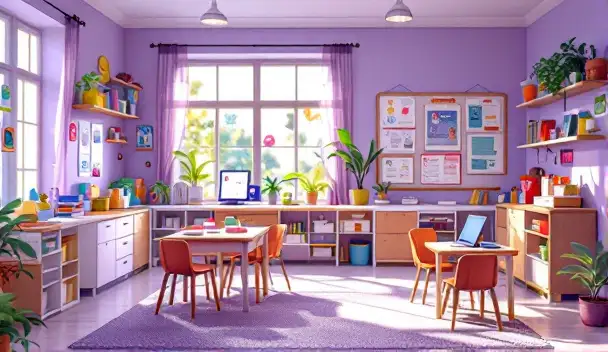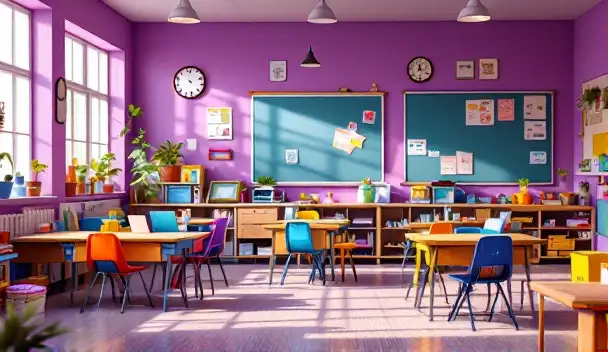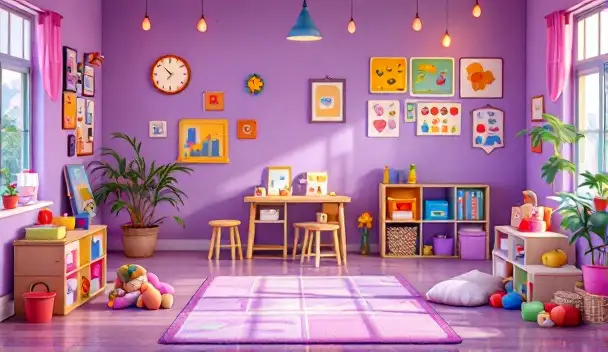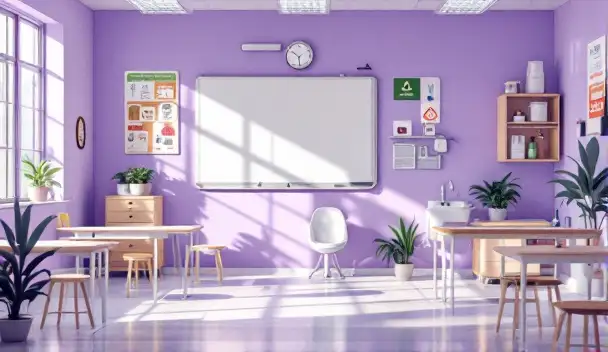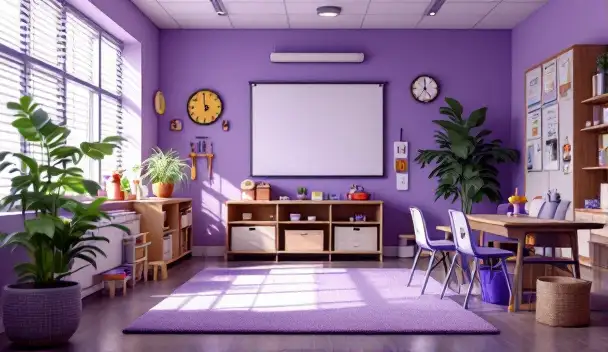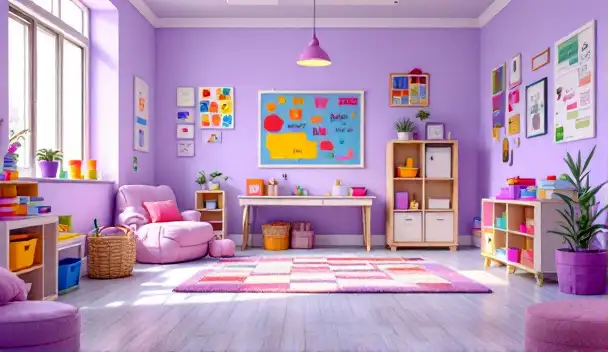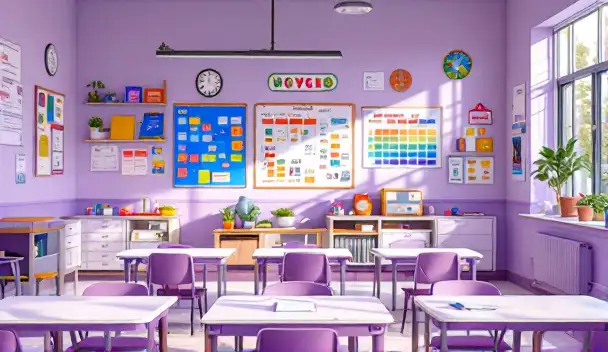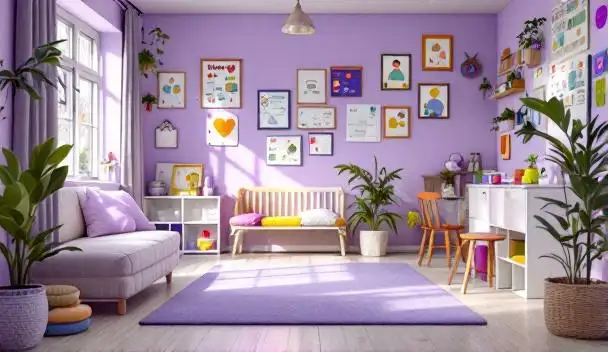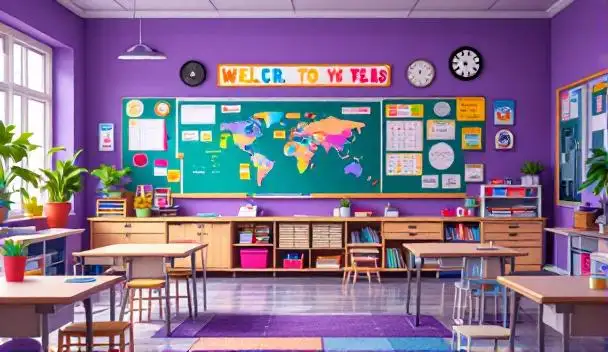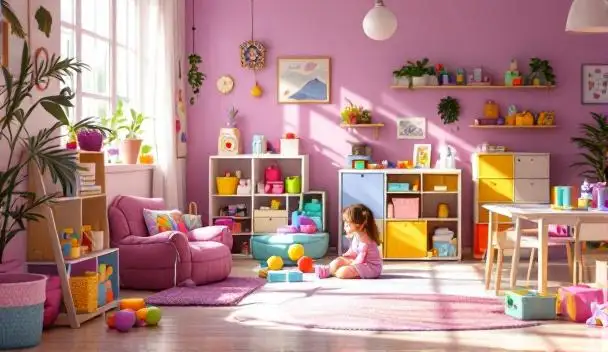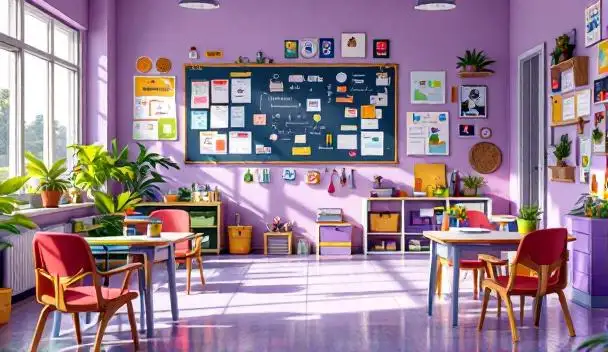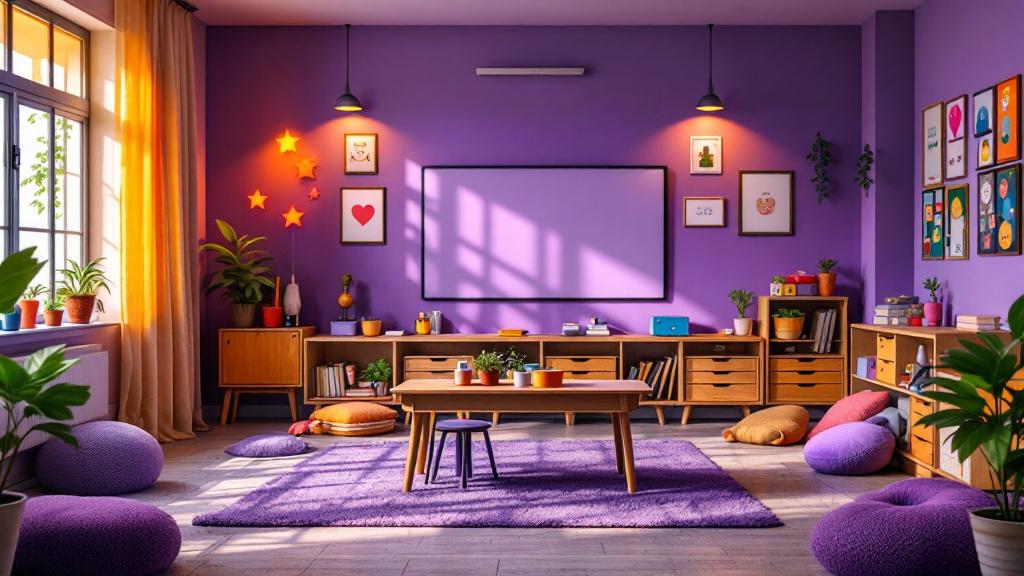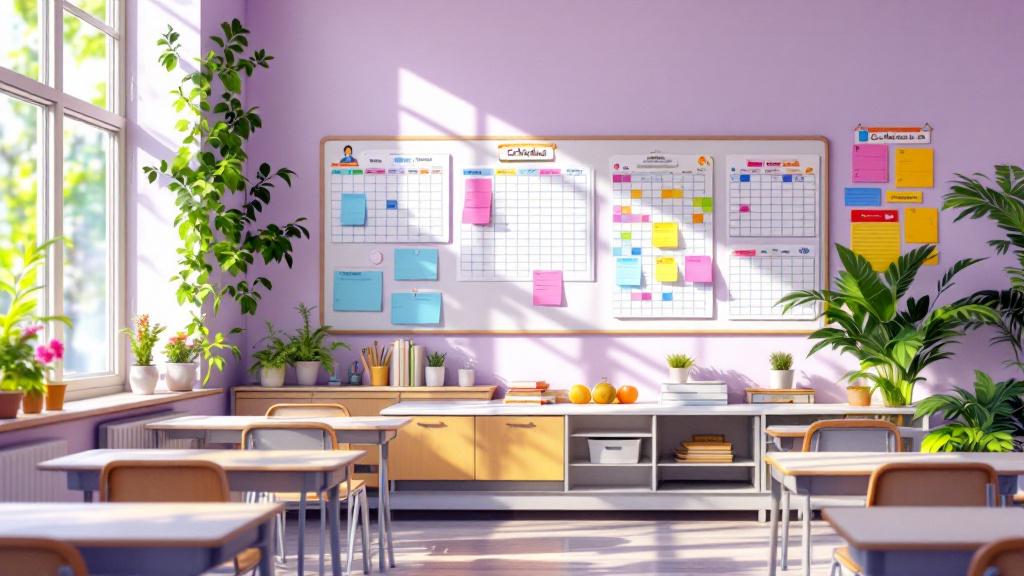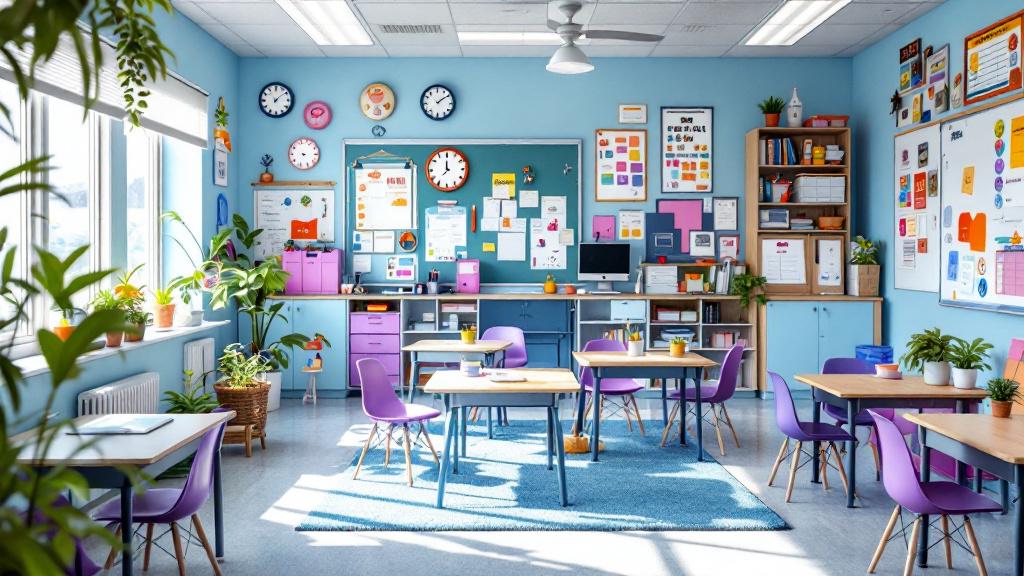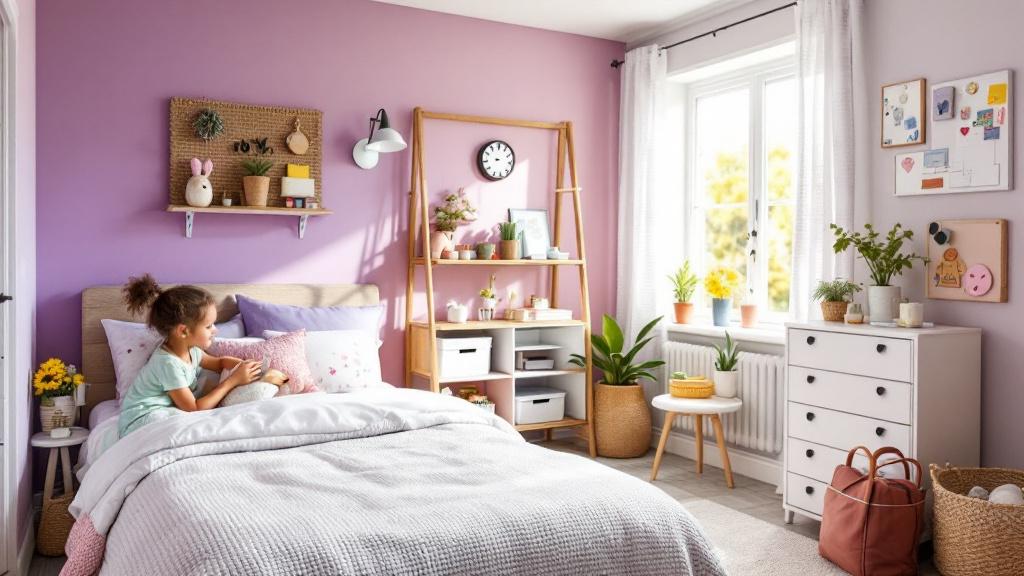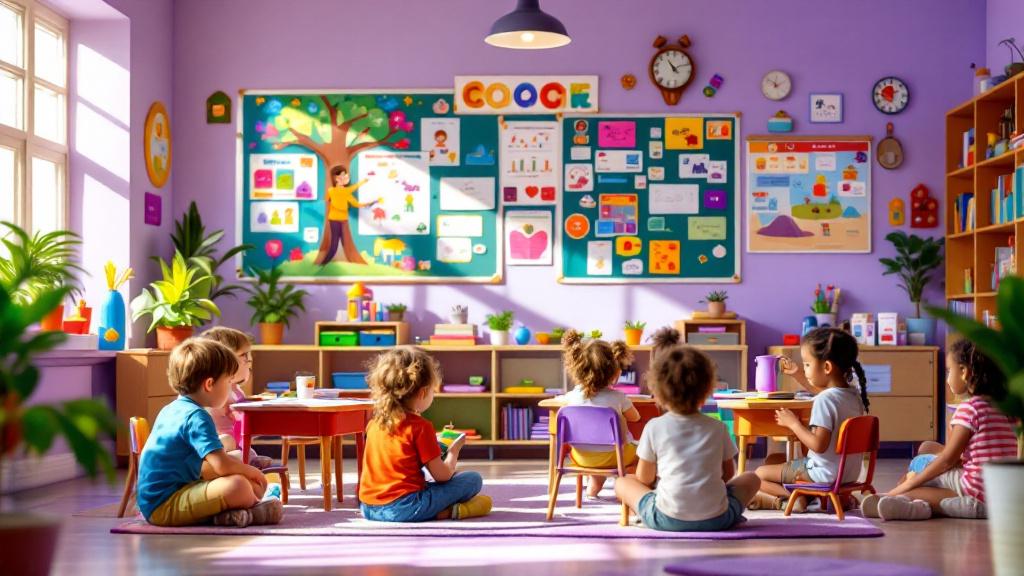Understanding the Power of Visual Supports in ABA Therapy
Visual schedules are a cornerstone tool in ABA therapy, especially when implemented at home. They serve as visual cues that outline routines and activities, fostering understanding, independence, and reduced anxiety for children with autism. This article explores how to effectively incorporate visual schedules into daily routines, highlighting strategies, examples, and practical tips for caregivers.
The Foundations of Visual Schedules in ABA Therapy

What are visual schedules and how are they used in ABA?
A visual schedule is a collection of pictures, icons, words, or objects arranged in a sequence to represent daily activities or routines. These visual tools serve as visual guides for children, particularly in ABA therapy, by illustrating what the day entails—from morning routines to bedtime. They help children anticipate what’s coming next, allowing them to prepare mentally and emotionally for transitions. Visual schedules are widely used across home, school, and community settings to foster understanding, independence, and smooth transitions.
They typically include a variety of visual supports—such as photographs, illustrated icons, written words, or tangible objects—that depict specific activities or steps. The primary purpose is to make routines clear and predictable, reducing anxiety and challenging behaviors. For children with autism, visual schedules act as a powerful communication aid, helping them comprehend their environment and daily flow without relying solely on verbal instructions.
How do visual schedules support children with autism?
Visual schedules provide structures that encourage a sense of security through predictability. Children with autism often face difficulty handling unexpected changes, which can lead to stress or meltdowns. Visual tools help mitigate this by offering a visual reminder of what to expect, thus easing transitions between activities.
Through clear visual cues, children gain a better understanding of routines, which supports their ability to participate more fully in daily tasks. The schedules also foster independence by enabling children to follow routines with minimal adult prompts. This increased independence not only boosts their confidence but also encourages autonomy in various settings.
Importantly, visual schedules contribute to reducing feelings of confusion and frustration. They serve as effective communication tools, especially for non-verbal children, by illustrating steps and options visually. This enhances social engagement and supports learning new skills, making routines more manageable and less overwhelming.
Designing an Effective Visual Schedule for Home Use

How do you create and implement a visual schedule in ABA therapy?
Creating and implementing a visual schedule at home begins with understanding the child's daily needs and routines. The process involves selecting the essential activities that the child regularly engages in, such as waking up, breakfast, playtime, therapy, and bedtime.
Next, gather visual materials suited to the child's preferences and abilities. These can include printed photos, simple drawings, icons, or symbols that clearly represent each activity.
Organize these visuals in a logical sequence, starting from the morning routine and ending with bedtime. Use a visual board, picture cards, or an app to display the schedule consistently.
Introduce the schedule gradually, explaining each step in simple language and showing the visuals alongside the activity. Encouraging the child to interact with the visuals—like pointing or touching—helps reinforce understanding.
Positive reinforcement, such as praise or small rewards, encourages the child to follow the schedule and fosters independence.
To ensure effectiveness, use the visual schedule consistently and remain flexible, making adjustments as the child's needs or routines change. This adaptable approach supports a sense of predictability and reduces anxiety.
What are practical steps for introducing a visual schedule at home?
Begin with simple routines, such as morning or evening activities, to avoid overwhelming the child. Display each visual step clearly and explain what it represents using straightforward language.
Allow the child to familiarize themselves with the visuals by touching or pointing to them during the introduction. This hands-on approach promotes engagement and understanding.
Reinforce participation with positive feedback—clapping, verbal praise, or small treats—to motivate the child and boost confidence.
Maintain consistency by using the schedule daily, and reinforce the routine by reviewing it regularly. As the child becomes comfortable, gradually add more activities or increase the complexity.
Adjust the visuals or the sequence as needed, based on the child's progress, ensuring the schedule remains relevant and supportive of their learning goals.
This structured yet flexible approach helps children with autism develop routines, enhance independence, and reduce stress associated with daily transitions.
Strategies for Flexibility and Engagement with Visual Schedules

How can you make visual schedules more flexible for children?
Flexible visual schedules are essential to accommodate a child's changing needs and preferences. One effective method involves using change cards, which are removable visuals that can be swapped in and out to signal changes or new activities. These help children understand that routines can vary and foster adaptability.
Choice icons are another helpful tool. They give children options to select activities by choosing from pictures or symbols, promoting independence and giving them a sense of control over their day. Break cards, which signal a pause or rest, help children manage their stamina and cope with transitions more easily.
Incorporating these visual aids supports smoother transitions and reduces anxiety about unexpected changes. Consistent use of flexible visuals encourages children to become more comfortable with variability, ultimately helping them build resilience and independence.
What techniques can increase engagement with visual schedules?
To keep children motivated and involved, it's important to integrate motivators into visual schedules. Praising children when they follow their schedule or when they make choices can reinforce positive behavior and enhance participation.
Using preferred activities or small rewards tied to schedule completion can also boost enthusiasm. Making visuals colorful, appealing, and tailored to the child's interests increases their curiosity and willingness to engage.
Involving children in updating or customizing their visual schedules fosters a sense of responsibility. When children help choose or create visuals, they feel more connected and invested in their routines.
Regular interaction with the schedule, along with positive reinforcement, helps maintain focus, promote independence, and make daily routines more enjoyable.
Practical Examples and Application of Visual Schedules at Home
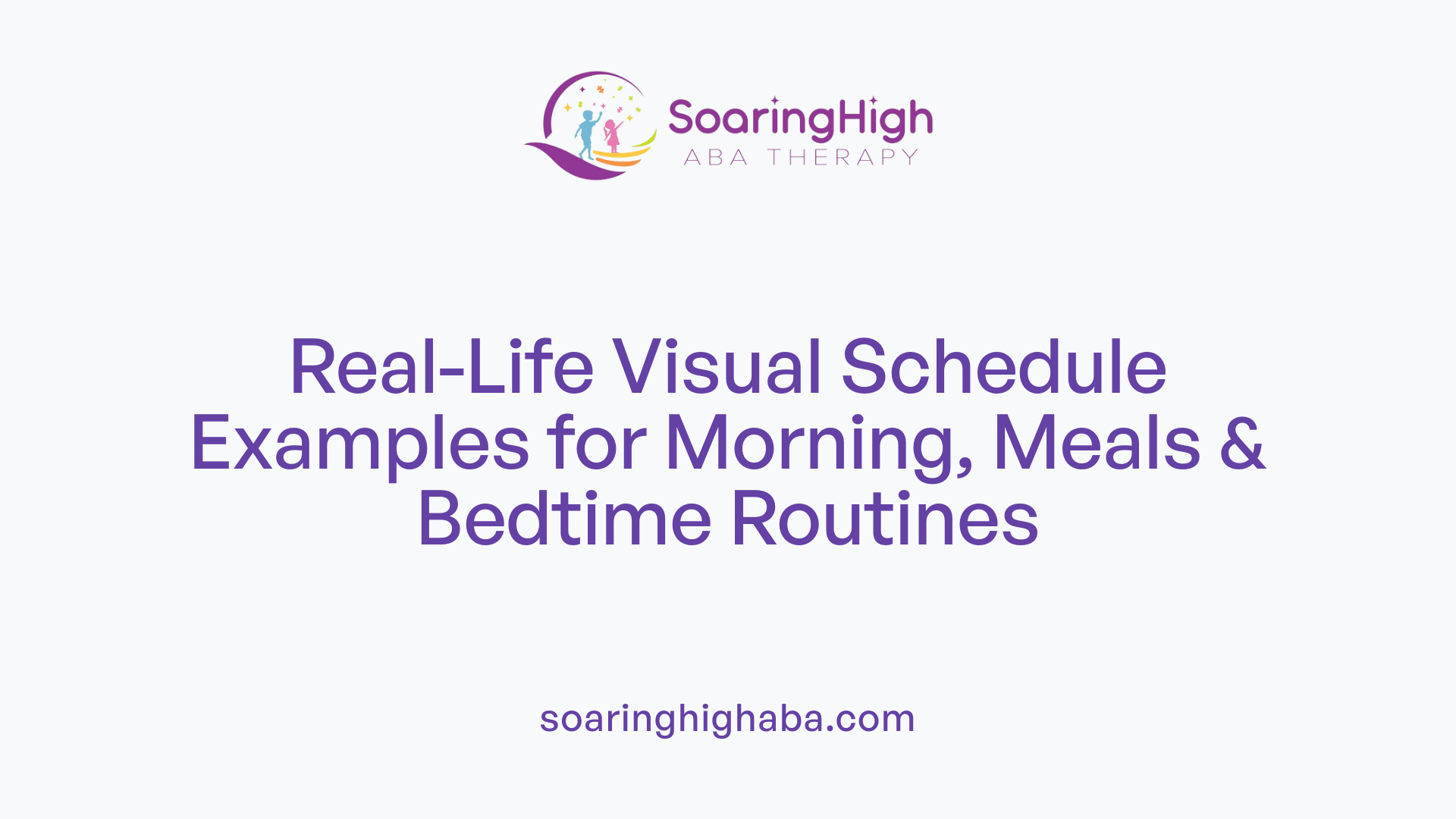
What are some sample routines like morning, meals, and bedtime?
At home, visual schedules can be tailored to fit daily routines such as morning, meals, and bedtime. For a morning routine, visuals might include pictures of brushing teeth, washing face, putting on clothes, and eating breakfast, arranged in order. During meal times, visuals can depict pouring juice, cutting food, or sitting at the table to clearly guide the child.
Bedtime routines often include visuals for changing into pajamas, brushing teeth, reading a story, and turning off the lights. These visual charts help children anticipate what’s next, making transitions smoother.
How can visual aids assist with specific tasks?
Visual supports such as picture cards or illustrated steps simplify complex activities by breaking them into manageable parts. For example, a visual aid for washing hands might include images for turning on the tap, applying soap, scrubbing hands, rinsing, and drying.
These visuals serve as reminders, helping children understand each step and perform tasks independently. This not only boosts their confidence but also reduces frustration and confusion.
How do visuals help in breaking down complex activities?
Using visuals to divide complicated activities into smaller, clear steps makes it easier for children to grasp the sequence. For instance, preparing a snack can be shown step-by-step: opening the fridge, taking out food, using utensils, and cleaning up.
By following visual cues, children gain a sense of control and predictability. This approach decreases anxiety and encourages active participation in daily routines, fostering independence and social skills.
Supporting Independence and Skill Development with Visual Aids
How do visual schedules foster independence?
Visual schedules are powerful tools that promote self-directed routines for children with autism. By breaking down daily activities into clear, manageable steps, children learn to follow routines with minimal prompts from caregivers or therapists. This process builds their confidence, allowing them to understand what comes next and how to complete tasks independently.
Using visual aids like pictures, icons, or words, children can navigate their day on their own. These visual cues serve as prompts, guiding children through their activities and encouraging responsibility. Over time, this independence helps children develop essential life skills, as they begin to rely less on direct supervision and more on their understanding of routines.
Building confidence and responsibility
In addition to fostering independence, visual schedules help children feel more secure and in control. When children know what to expect, they experience less anxiety and are more willing to participate in daily activities. This sense of predictability is crucial for reducing challenging behaviors associated with transitions or unexpected changes.
Encouraging children to interact with their visual schedule, such as choosing icons or pointing to each activity, further promotes responsibility. It empowers children to manage their day and take ownership of completing tasks, which ultimately boosts their confidence and facilitates their growth toward greater autonomy.
Monitoring and adjusting schedules
Caregivers and therapists play a vital role in maintaining effective visual schedules. Regular review and adaptation are essential to meet the child's changing needs and routines. This includes updating visuals, adding or removing activities, and incorporating change cards or choice icons to enhance flexibility.
Consistent monitoring ensures that the schedule remains relevant and supportive. It also provides opportunities to reinforce positive behaviors and motivate the child through praise or small rewards. By collaborating closely, caregivers and therapists can help children gradually handle more complex routines and adapt to new experiences.
Fostering independence with visual aids in ABA involves not only creating structured routines but also actively involving children in managing their schedules. This collaborative approach nurtures skills that are vital for daily living and lifelong success.
Transforming Routines into Learning Opportunities
Incorporating visual schedules into home-based ABA therapy creates a structured, predictable environment that fosters independence, reduces anxiety, and enhances learning. Through careful planning, flexible implementation, and consistent reinforcement, caregivers can significantly improve their child's ability to navigate daily activities confidently. Embracing these strategies not only supports therapy goals but also empowers children to develop essential life skills in a nurturing setting.
References
- How to Use Visual Schedules at Home: ABA Tips for Creating ...
- Using Visual Schedules to Help Kids with Autism: A Brief Guide
- Autism Routines: Build a Structured Daily Schedule for Success
- How to Create Visual Schedules for Children with Autism | Childwise
- Visual Supports for Non-Verbal Children in ABA Therapy
- Incorporating ABA Therapy Activities into Daily Routines at Home
- ABA Therapy at Home - Personalized Autism Services | PMT
- In-Home ABA Therapy - Surpass Behavioral Health
- Applied Behavior Analysis FAQ












